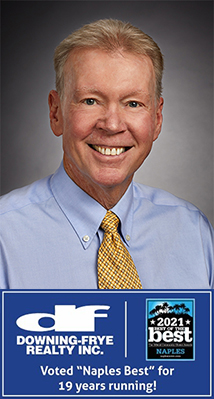
By Adelie Pojzman-Pontay
For three months, the Marco Island Marriott was hidden from the public while it received a facelift. On Saturday, the hotel that has stood as an island landmark for decades will open again to the public.
More than 50 years ago, Herb Savage helped bring the landmark to the island. Now 96, Savage designed the very first building that would become the Marriott. Back then, the three Mackle brothers, who owned the island, used the hotel to host potential clients for housing developments.
The first building had 50 rooms and looked more like a motel, he said Friday.
“But the Mackle brothers wouldn’t name it a motel!” he said.
When they started building the original hotel, there was barely any housing development on the island, said Savage.
“There was a gas station, a restaurant and a post office,” he said.
As the community grew, so did the building. Soon, another 50 rooms were built, then a second story, then finally a high-rise building in the 1970s.
“This is a residential community,” Frank Mackle Jr. used to tell Savage. “ We want it for young couples, working couples and retired people,” remembered Savage.
Now the hotel is well on its way in its transformation to Marriott’s luxury tier JW Marriott property.
MARRIOTT

Marco Island with a real signature property, in a way similar to what the Ritz Carlton did for Naples,” said Rob Pfeffer, the hotel’s sales and marketing director.
Pfeffer said the Marriott had contributed to the growth and prosperity of the island. He added the hotel is the most important property on the island, and one of its most important assets.
The new facilities include adult-only spaces, including a rooftop pool and a spa. Pfeffer said it will attract local residents from Naples or Bonita Springs, retired or without children, who want to enjoy a “staycation.”
“We’re just 15 or 20 minutes away, but you feel like you’ve traveled to a private island,” said Pfeffer.
He said Naples had become one of the hotel’s Top 10 source markets in the last three years.
Pfeffer said an additional 40,000 guests would check into the JW Marriott annually. The hotel is taking advantage of the “two years of extreme growth in leisure market,” he said. The demand especially has increased in Southwest Florida, which justified the $250 million renovation.
The investment effort seems to be paying off already. The hotel is 25 percent ahead of where it hoped to be in advance bookings for the next two years. Pfeffer estimates a JW customer will spend on average more than $750 per room per night, which is $200 higher than what was spent previously on the room, meals, drinks and activities such as golf or spa, and other expenses that contribute to the local economy.
The Marriott is expected to contribute an additional $4 million in state and occupancy taxes each year, as well as another $1 million in property taxes annually, he said.
Pfeffer said he believed the Marriott was a front-runner to attract luxury tier customers, but other local businesses are keeping up, including several recently opened upscale restaurants.
Check it out at www.marriott.com.


